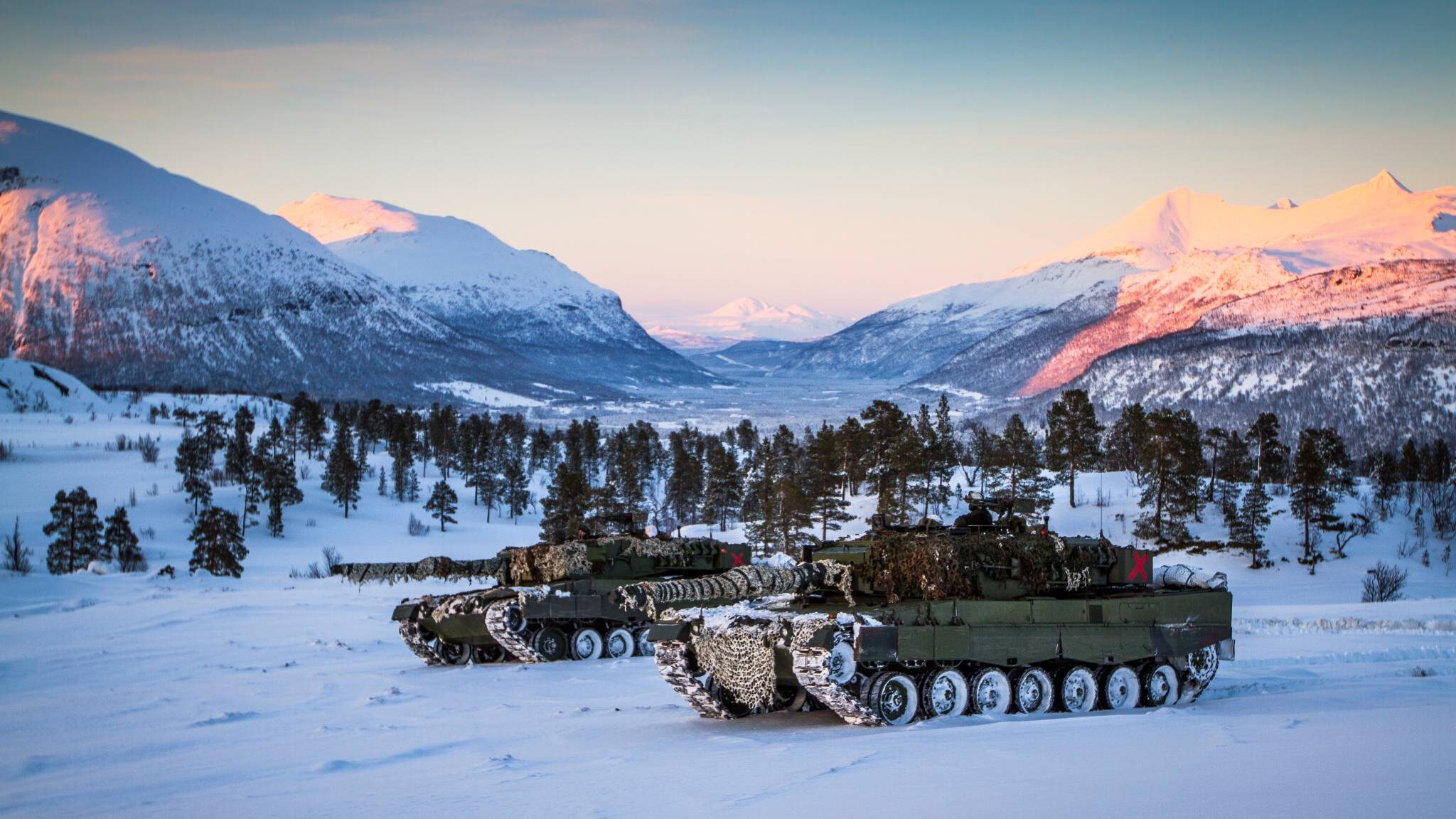
Two Leopard tanks at Setermoen fire range during Cold Response 2014. (Marius Kaniewski, Norwegian Armed Forces)
BELFAST — Norway’s decision to acquire 54 German Leopard 2A8 main battle tanks has brought to a close tense debate between military and political officials surrounding land warfare funding priorities.
The planned 19.7 billion NOK ($1.89 billion) procurement announced Feb. 3, which also includes an option to buy an additional 18 vehicles, had been publicly opposed by Norway’s Chief of Defense Eirik Kristoffersen as he advised the government to invest in new helicopters and long range precision fires instead.
“His [Kristoffersen’s] comments before Christmas were a shock to the system because there have been numerous committees held and studies concluded that [indicated] Norway should have a mechanized battalion,” said Karsten Friis, senior security and defence group researcher at the Norwegian Institute of International Affairs.
Kristoffersen’s position was rejected by head of the Norwegian Armed Forces’ operational headquarters Yngve Odlo, telling the Norwegian Armed Forces’ forum, that there is “no alternative” to new tanks as they will be needed for 15 to 20 years.
The dispute owes much to the Ukraine war sparking debate among military observers around the utility of tanks in contested environments, predominately shaped by the implications of sustaining heavy losses to less expensive UAVs or anti-tank weapons.
RELATED: Abrams to rumble into Ukraine as US joins Germany’s vow to send Kyiv tanks
Norwegian Prime Minister Jonas Gahr Støre stressed that the Leopard 2A7 acquisition will lead to closer security ties with Germany, and ensure that the country shares a common main battle tank with “Nordic neighbors and close allies.”
The new tanks, set to replace Leopard 2A4 vehicles, are due to be phased in with the Norwegian Army between 2026 and 2031, although a contract with manufacturer Krauss-Maffei Wegmann (KMV) has still to be signed.
“The contract is expected in the near future,” said a spokesperson for the Norwegian Defence Materiel Agency in a statement to Breaking Defense.
Oslo’s decision follows testing of the Leopard and the K2 Black Panther offered by South Korea’s Hyundai Rotem. Selection of the Leopard is unsurprising because of Norway’s collaboration with Germany on a number of major defense and security related projects, according to Friis.
“They already hold submarine co-operation, and since the war in Ukraine started Germany’s dependence on Norwegian natural gas has increased relatively speaking, so bilateral engagements have certainly been strengthened recently,” he said. “There are also some initiatives between Germany and Norway in NATO when it comes to protecting seabeds or underwater infrastructure. That is under discussion currently.”
The German-Norwegian Type 212 Common Design submarine program, led at an industrial level by Germany’s Thyssenkrupp Marine Systems, involves the building of six identical submarines — four for the Norwegian Navy and two for the German Navy.
Elsewhere, reliance across Europe on Norwegian natural gas has spiked dramatically since Russia invaded Ukraine, influenced mainly by the European Union moving to cut down on Russian gas imports.
Despite Gahr Støre pledging Monday to donate 75 billion NOK ($7.3 billion) over five years to Ukraine for military assistance, the government finds itself under pressure to justify such a relatively low funding package as it continues to make extraordinary oil and gas profits.
“Norway’s extra profit from petroleum prices stood at about 100 billion in 2022, so roughly speaking the government is basically committing to give away 1.5 percent of that per year to Ukraine,” said Friis. “Maybe some of the opposition parties will attempt to hike that up during future debates.”
Oslo has also still not said how many Leopard 2A4 tanks it will supply to Ukraine, having confirmed an intent to do so in January.
Regarding other national procurements, Breaking Defense previously reported that Norway’s long range precision fires program could see a tender to industry released in late 2023 or early 2024, ahead of entry to service scheduled for 2029.
Head start: Early ’25 may be first flight for Black Hawk with T901 engine
Sikorsky is using remaining FARA dollars to test out the new T901 engine in anticipation of integrating it on a UH-60 M Black Hawk later this year.


























